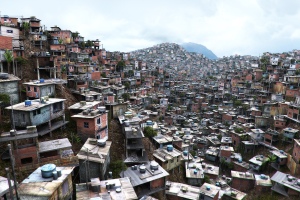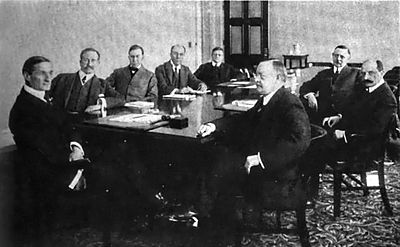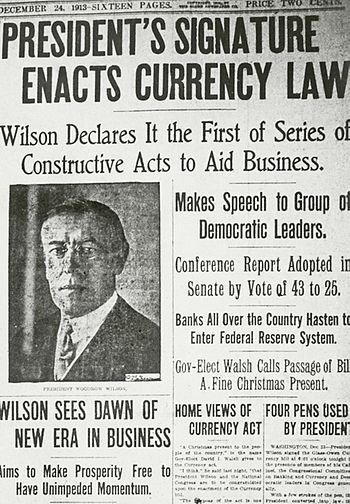A Teaser to ‘The Empire of Poverty’: The First Volume of The People’s Book Project
A Teaser to ‘The Empire of Poverty’: The First Volume of The People’s Book Project
By: Andrew Gavin Marshall
The following is a little teaser to some of the ideas, approach and perspective being pursued through the research and writing of the first volume of The People’s Book Project, ‘The Empire of Poverty.’ Please consider donating to the Project to help these efforts come to fruition.
It’s important to try to understand the global economic and financial system – the banks, corporations, central banks, economic policies (and effects) of governments, trade agreements, the creation and value of currencies, the function of the oft-heard ‘markets’ – as daunting as the task may seem. One might think that they need a degree in Economics in order to understand the complexities of the global economy, to comprehend the correct choices and policies which achieve the desired results. One might think that this is true, but it isn’t. The truth is that if most economists understood the global economy, and knew the ‘correct’ choices to make, we wouldn’t be where we currently are.
Economics – both theory and practice – is an illusion. There are no concrete rules on which to base economic thought; there is no ‘gravity’ to its physics. Economics is not science, it’s sophistry; the sleight of hand, the quick and slick tongue, the wave of the wand, the theatrics of the stage set for all to see, and the effects – as destructive as they may be to the real world and all life within it – are largely hidden from view; the illusion keeps the population enraptured in awe, aspiration, and fear.
This is not to say that there cannot be anything real produced or given growth by what we call ‘economics’: there are of course exchanges made, resources used, products created, lives benefitted, and entire societies and peoples changed. The effects are very real. However, they have a disproportionately destructive, oppressive, and dehumanizing effect upon the vast majority of humanity: they bestow upon a tiny fraction unparalleled power, and thus, dehumanization in another form; while creating a comparably minimal buffer of generally satiated and malleable middle classes, educated well-enough to work and survive the horror show that is the global economic order, but consumed by a culture lacking in substance and meaning, and thus, left morally, psychologically, and intellectually lobotomized, physically paralyzed, and thus, once again, dehumanized.
So our global economic order has the effect of generally dehumanizing all who are subject to its whims and whammies; which is to say, almost everyone, everywhere. Those peoples and societies that are not integrated into the global economy tend to be bombed, invaded, overthrown or droned. Those who remain are doomed to slow death: one in seven people on earth live in urban slums[1] – more than the combined populations of Canada, the United States, and the European Union – while the majority of humanity lives in deep poverty, in hunger, and malnutrition; with 18 million people being killed from poverty-related causes every year, including over 9 million children.[2] Every year.
During the Holocaust, approximately six million Jews were killed. Take that number, add 50% to make 9 million, and just think: this is how many children die every year from poverty. Every year a new Holocaust.
These deaths are preventable. Truly. It has been estimated that less than the yearly Pentagon budget would lift the poorest 3 billion people of the world out of extreme poverty. In fact, in the twenty years following the end of the Cold War in 1991, there were roughly 360 million preventable deaths caused by poverty-related issues, more than the combined deaths of all of the wars of the 20th century.[3]
But this is not our priority. Our priority is that banks and corporations make as much profits as possible, because this – by some unknown and unseen magic – will (it is said) benefit everyone else. It is propagated and believed that this system, as it exists, or even with the proper tinkering and toiling, can represent the totality of life and being on this world; to be humanizing, and to represent ‘human nature’ at its best. But if this system were ‘human nature,’ why would it be so dehumanizing? How many organisms grow by destroying that which their existence depends upon? Parasites, cancers and various diseases can kill the host before transferring to another.
We have no other host to go to. Those who sit atop the global structure know this, which is why they express such an interest in finding new planets to escape to (and presumably, plunder and destroy). The billionaires have given up pretending to care for the world’s billions of people suffering, which is why they are looking to space travel, mining asteroids, and searching for hospitable environments elsewhere.[4] Their long-term ‘exit strategy’ is to abandon ship, not to change the direction we currently traverse.
Are we – as a species – a cancer upon the earth? Looking at the big picture, it may often seem that way. But it is in the small moments, the single acts, exchanged emotions, interacting individuals, in the every day life – those moments of joy, love, wonder – in which we find our own personal meaning, in which we discover that humanity – and human nature – can be so much more than destructive, petty, and pestilent behaviour. We are told we are a society of ‘individuals’ – that we are free, democratic and equal. If that were the case: why are we so isolated? We are individuals, yes, in the physical sense: but we are disconnected from the collective, separated from the species as a whole.
We think and act individually, but do so ignorantly, and arrogantly. Our thoughts and feelings are collected and collated by our commanding culture of irrelevance. The immense gift of a human mind – with all of its possibilities and capabilities, both known and unknown – is largely squandered on pop culture, sports, celebrities, consumer items and entertainment. So long as we remain distracted by the ‘celebration of irrelevance’, we are lobotomized of our meaning.
Is this how you see yourself as an individual? As the world you live in? It’s not an appealing thought. So why, then, do we live in a world in which as individuals we may act morally, purposefully, passionately, and proudly; though as a collective species, we are petty, parasitic, power-mad, pathological, and pretty much evil?
Is it ‘human nature’ that our personal values and priorities are not reflected in the collective – institutionalized – expression of humanity? Or, is it that the way in which our society is constructed, the institutions and ideologies, the policies, programs, priorities and effects of the way in which our world is ordered and altered, is inherently counter to ‘human nature’? In other words: is human nature inherently self-destructive; or, is our constructed human ‘society’ (our global social, political and economic order) inherently destructive to human nature? Does human nature pervert the effects we have upon the world, or do the structures of world order – and power – pervert human nature?
It is this vast disconnect between our personal values and the form they take at the global – collective – level of the species, which is ultimately so dehumanizing. Because power is centralized at the top, and for such a tiny fraction of the species – so much so that there has never been a more unequal and vast ‘Empire of Poverty’ in all of human history, the ‘great inequality’ is not of wealth, but of power.
Wealth is an illusion: a manufactured means to power, a collective delusion. Power is central to human nature. Every person needs power: they need autonomy over their own lives, thoughts, feelings, and decisions. It is central to maturity, it is central to leaving adolescence and becoming an adult, and it is central to finding a sense of self-worth. Understanding oneself is to empower oneself. Power is about possibility, personal fulfillment, passion and purpose. It has individual and social representations. It can be seen – or not – in your own life, but also in the world around us.
A pre-requisite for power is freedom. The process of achieving freedom is, itself, empowering. Once (and if) achieved, it is of immense responsibility to use your new power of freedom wisely, for the effects that it may have upon others and the rest of the world are endless. Power is freedom, quite simply, because slavery is the opposite of both freedom and power: it is the most un-free and the most disempowering personal position to be in.
Freedom is power; power is freedom. If we were actually free, we would have significantly more power. But we don’t. We barely have any control over our own individual lives, let alone the world around us. We leave all that to the others, to those with the proper degrees, the ‘expertise,’ the politicians, the pundits, the ‘right’ people… because they’ve obviously done such a great job of it so far. We remain – as a species, and very often as individuals – neutered from the necessities of individual empowerment, subjected instead to the very-often-arbitrary abuses of power over others.
So if we are not free, what are we? Certainly, we are not slaves, for we have no shackles, bear the brunt of no whips, serve no visible masters. We are, perhaps, slaves of another kind. We are financially, reflexively, intellectually, emotionally and hopelessly and very often spiritually enslaved to the system, as it exists. We are slaves to money. We serve the masters of money, with our time, with our labour and efforts, with our interactions, exchanges, interests, intelligence and aspirations. We are slaves to money.
Our society is built and sustained upon it; and our species is being driven to extinction because of it. The cause and effect of money – or more aptly, debt – slavery, is the distribution of power among the species: too few have too much, and too many have too little. This imbalance of power within the species is leading to our self-destruction, our inevitable extinction if we continue along this path.
Money is both the means and very often – the reason – for continuing down this path, for maintaining this imbalance. While very few have all the money, everyone – and everywhere else – has all the debt. This is not the wondrous ‘free market’ capitalist utopia which is incessantly babbled about, but the very real global feudal dystopia, both cause and effect of the power imbalance and money-system. In feudalism, there is no freedom, only serfdom.
Welcome to our global economic order, serf!
Welcome to the Empire of Poverty.
But it’s not hopeless. The truth is both painful, but also full of possibilities. The truth is that we do have the ability to understand the world we live in, to comprehend our global economic order. We don’t need a degree; we just need honesty.
The illusion that is our economic system is built not upon technical knowledge, but rather, technical language, a highly political language, “designed to make lies sound truthful, murder respectable, and to give a feeling of solidity to pure wind,” as George Orwell defined the term. Our inability to communicate honesty, and thus effectively, about our economic – and indeed, political and social – system is an essential mechanism in maintaining that system.
To speak and ‘understand’ this language, at least at a superficial level, usually does require some ‘education’: economists must be trained, so too must political and other social scientists. The artificial separations in their knowledge – (as in, the notion that the economic world exists separate from the political and social world, and thus, must be studied separately) ensures that none who receive a ‘proper education’ achieve a profound understanding of the world. Some may, but they are few and far between, and usually weeded out or co-opted.
Such a ‘proper education’ will allow one to gain enough basic knowledge related to the sector of society in which they aim to explore and advance, and they are given just enough knowledge to do so, but not enough to honestly look at – let alone have the capacity to communicate – the reality of how our global political, social and economic order functions and evolves. They may see problems, make recommendations, propose policies, and they may even do some good, but ultimately – as we still remain on the path toward extinction – they have not, and cannot – do enough.
Few possibilities – few ‘solutions’ – or opportunities, are communicated to the populations that are effected under and by these societies, and by the decisions the few at the top make. People are generally given a small set of options from which to choose, like guessing what’s behind door number one or two, when both are ultimately terrible, and ineffectual (in a positive sense). We put ‘faith’ – however empty – into the hands of politicians, we consume the crap spewed in the media, or we lose ourselves in the vast vacancy that is the ‘substance’ of our culture; a culture of mythology, lies, fantasy, persuasion, punishment, entertainment and manipulation.
Our hope is first in honesty. We can – and must – look honestly at the world for what it is, not what we want or imagine it to be, but what it is. Then, we can – and must – communicate this message, and to do so honestly and directly. This is a human reality, and it must become a part of a collective human knowledge, a shift in understanding, and thus, a change in direction; away from the current-inevitably of extinction, and toward survival. What comes after is for future generations to determine. For now, we must aim to simply survive.
Our goal must first be to begin charting a new path toward survival; this must be the duty of our present living and younger generations, as challenging, demanding and terrifying a responsibility that may be, it is either that, or extinction. And this is not a matter of hundreds or thousands of years away; it could be as soon as decades. If you – like me – are between 18 and 45 – the coming few decades of the world in which you currently live and hope to survive will become increasingly dreadful, destructive, oppressive, and disempowering. We cannot afford to continue kicking the can down the road, delaying – and exacerbating – the inevitable.
There is always hope, not in myths and fantasy, but hidden in reality. In our actions, ideas, in us – as individuals – connecting, interacting, sharing, working and creating together, as collectives, as part of a larger human organism; beginning to act as if we don’t want to self-destruct as a species, creating a new society – a new order – to make the current one obsolete. This is our great challenge. How do we navigate through living within the present existing order, while simultaneously seeking to create a new and alternative order? Moreover, how do we achieve this if it takes nearly all our effort, time and energy to simply survive the present order? To put it as crudely (and honestly) as possible: how the fuck are we supposed to change the world?!
I don’t know the answers. But I think that the best way to get them is to ask honest questions, seek an honest understanding, and to communicate honestly – about ourselves and the world – personally, and globally. This book is my attempt to understand and speak honestly about the world, not to speak in a language that only economists and political scientists or other so-called ‘experts’ can understand, but to speak plainly and directly. This will require me to dedicate some focus in attempting to translate political language into English. I don’t have a degree, and you won’t need one to read this, or to understand it.
The hope, then, that I hold for this book – and the wider book project of which it is apart – is that it presents an accessible and usable collection of knowledge. It is not the book that asks every question, or has ever answer (no books do!), but it is an attempt at taking a different approach to asking and seeking answers to some rather important questions about our world: what is the true nature of our society? How did we get here? Where are we going? Why? And, what can we do to change it?
This is but an introduction to our world, by no means comprehensive or conclusive, simply accessible, honest, and (hopefully) useful.
Andrew Gavin Marshall is a 26-year old researcher and writer based in Montreal, Canada. He is Project Manager of The People’s Book Project, chair of the Geopolitics Division of The Hampton Institute, research director for Occupy.com’s Global Power Project and the World of Resistance (WoR) Report, and hosts a weekly podcast show with BoilingFrogsPost.
Notes
[1] Mike Davis, Planet of Slums (Verso: London, 2007), pages 151-173.
[2] Thomas Pogge, “Keynote Address: Poverty, Climate Change, and Overpopulation,” Georgia Journal of International and Comparative Law (Vol. 38, 2010), pages 526-534.
[3] Ibid.
[4] Dan Vergano, “Billionaires back ambitious space projects,” USA Today, 13 May 2012:





